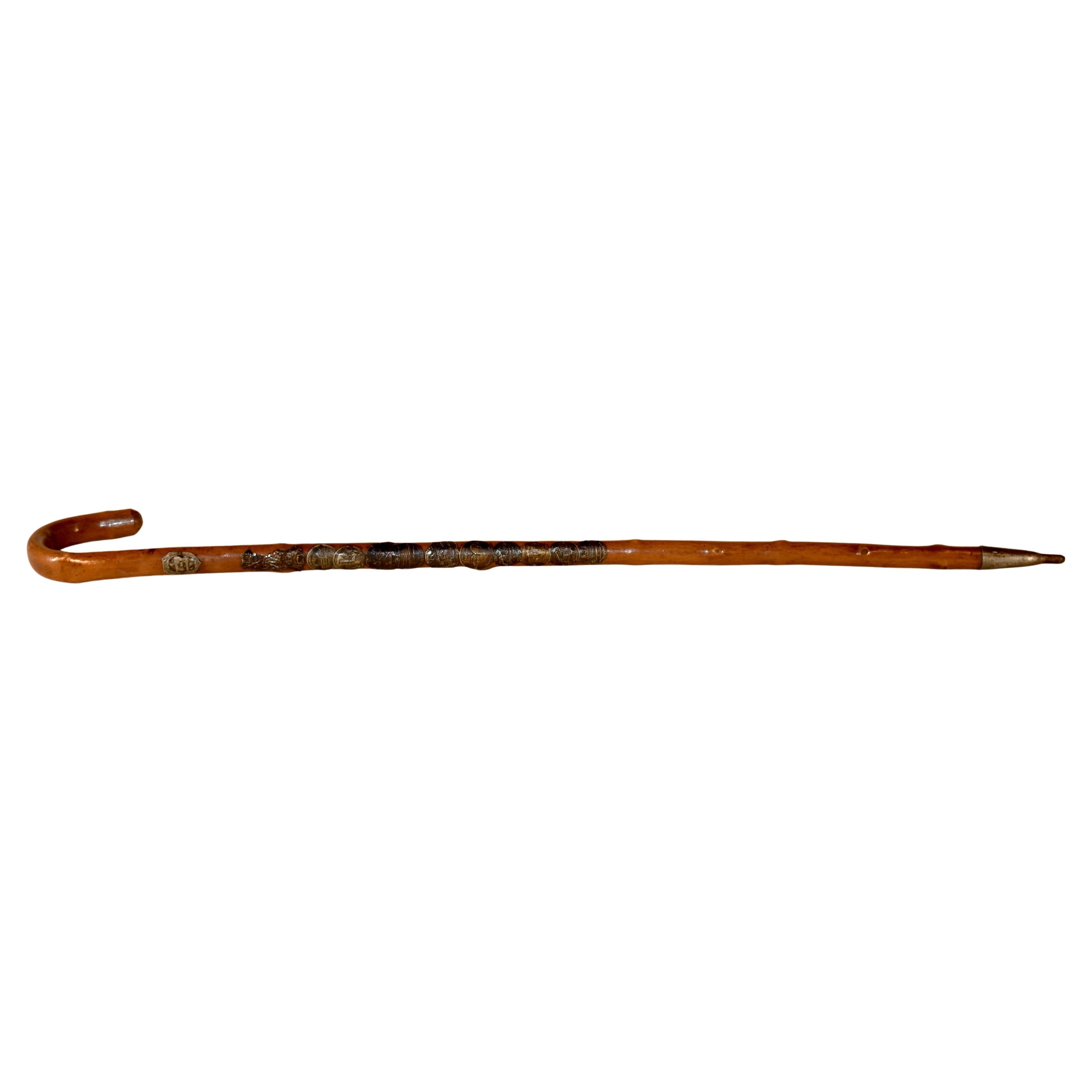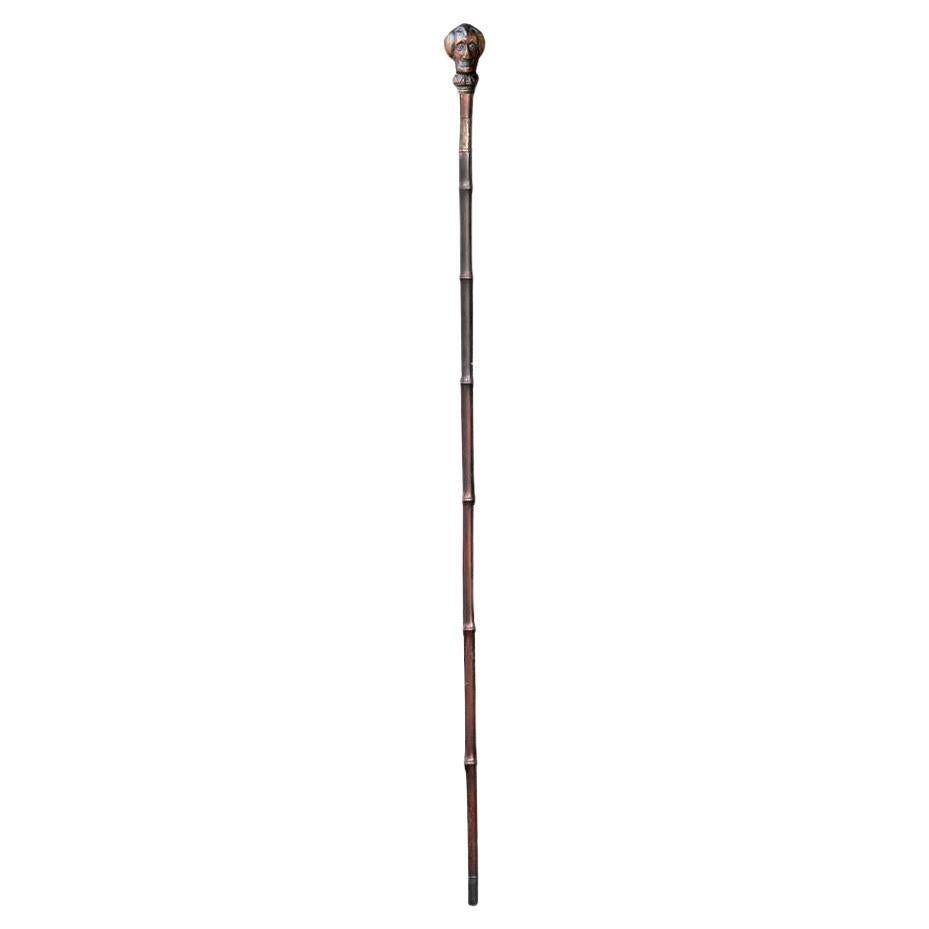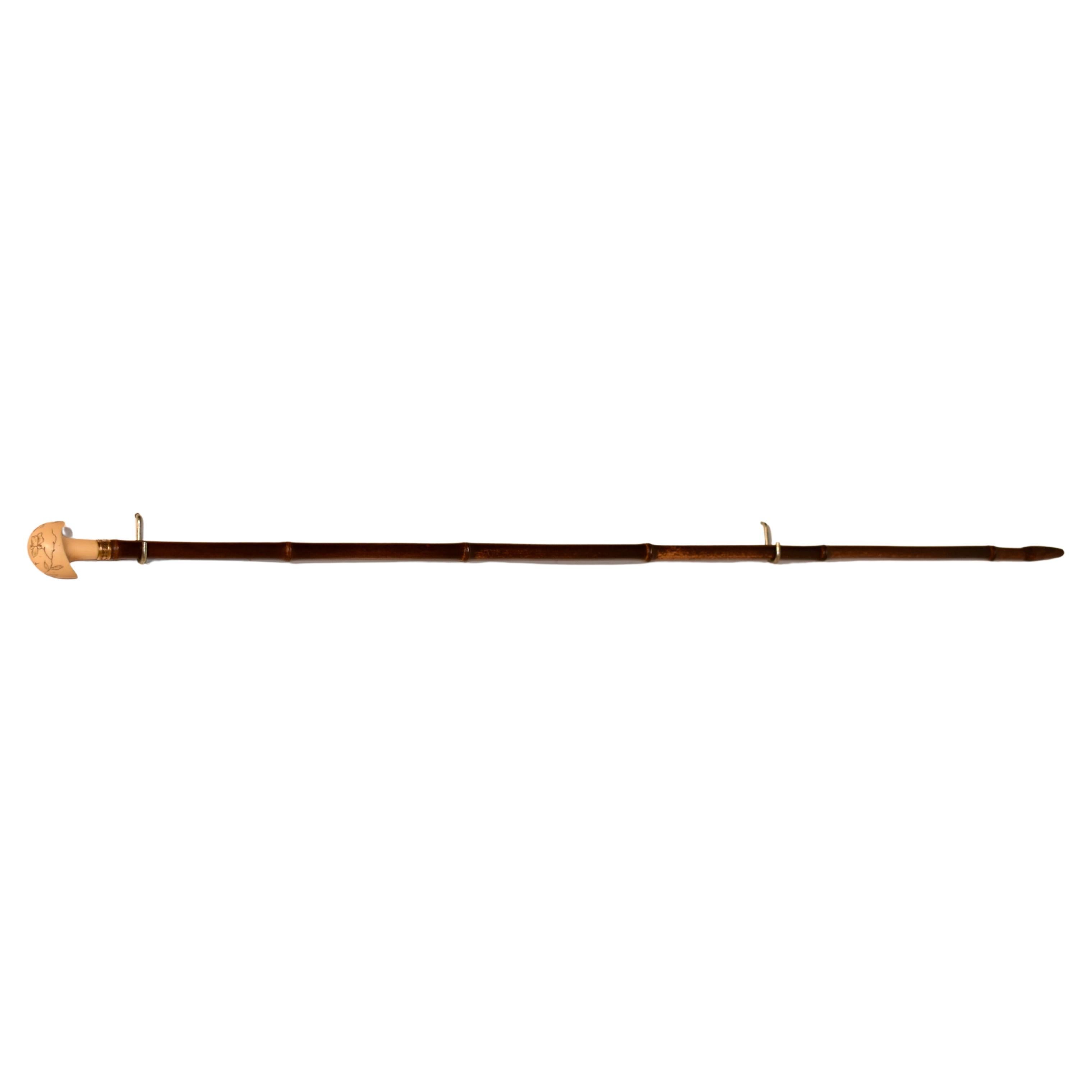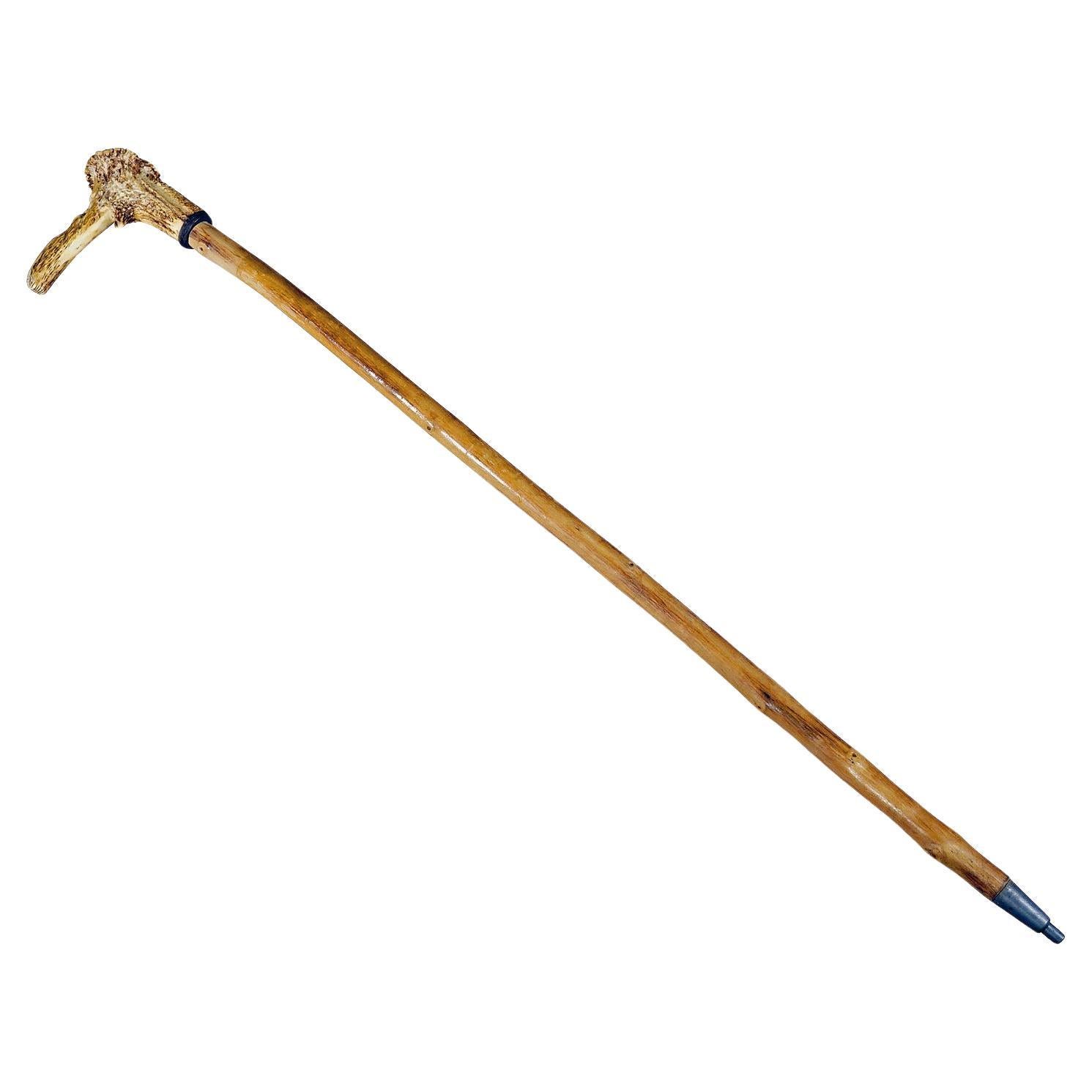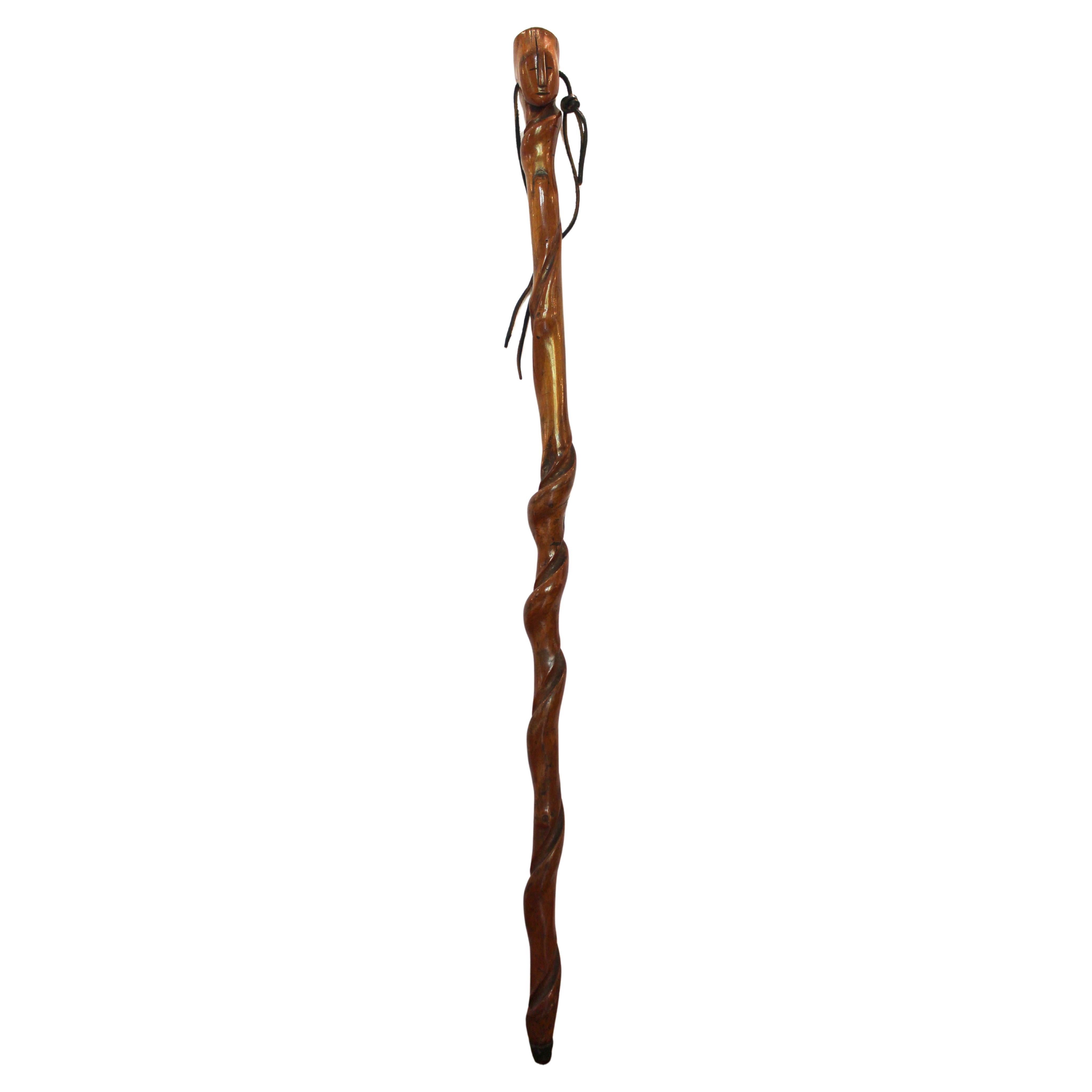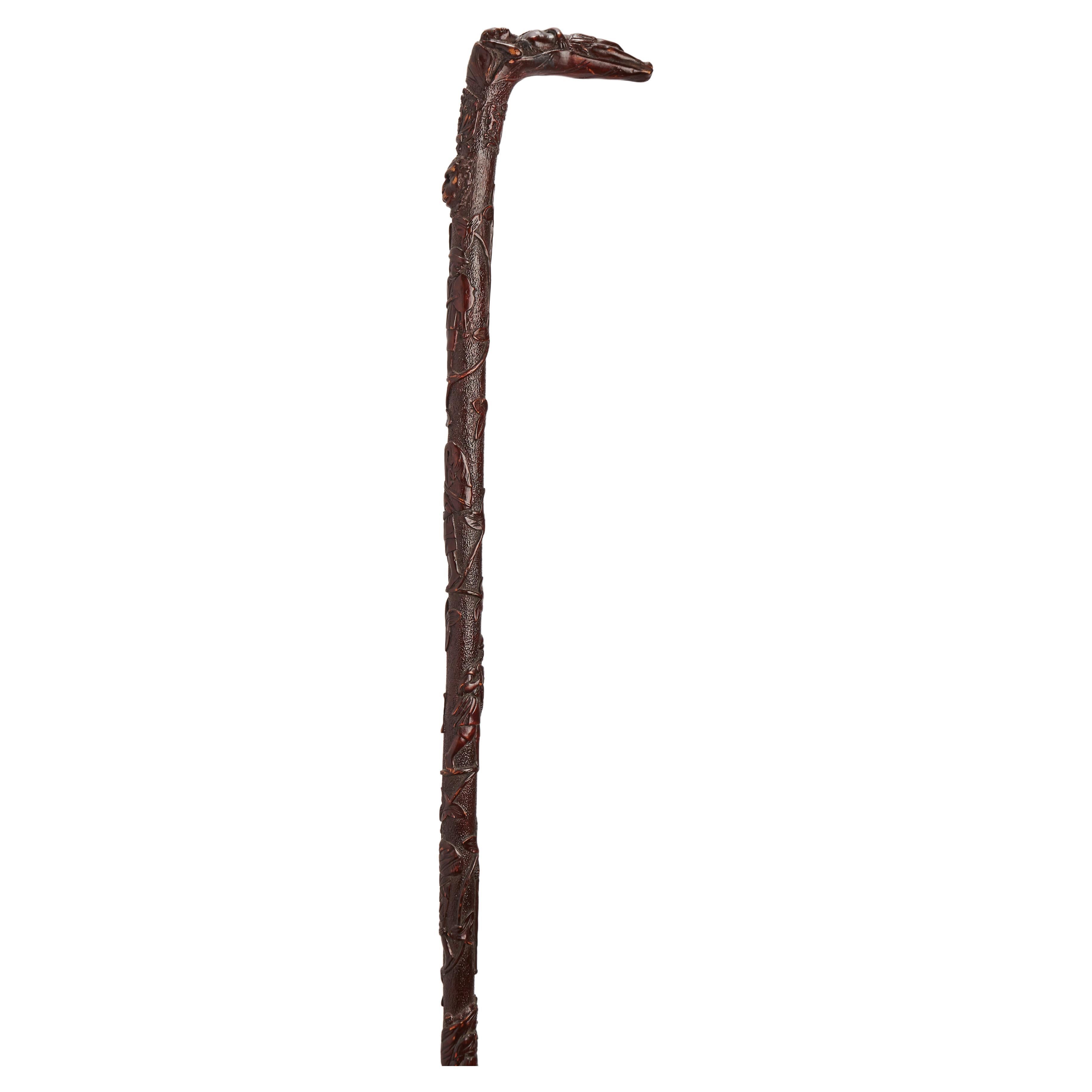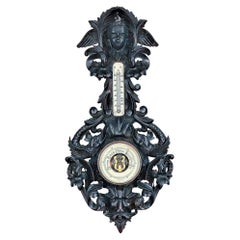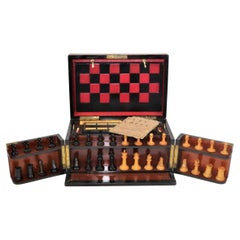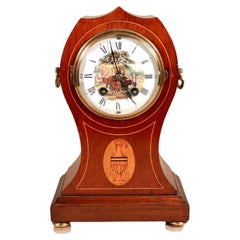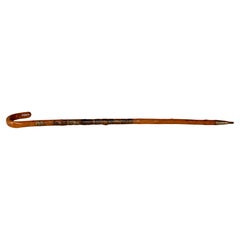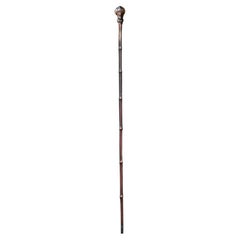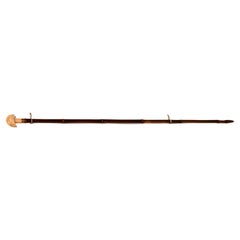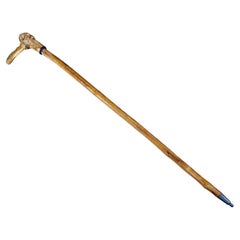Items Similar to Early 19th Century Austrian Hiking Staff
Want more images or videos?
Request additional images or videos from the seller
1 of 13
Early 19th Century Austrian Hiking Staff
$495
£375.99
€433.27
CA$697.08
A$772.82
CHF 406.15
MX$9,458.04
NOK 5,072.36
SEK 4,760.92
DKK 3,234.10
About the Item
This one-of-a-kind Austrian hiking staff has been handcrafted from solid oak. Oak is a relatively lightweight yet sturdy material, which lends itself perfectly as a hiking staff. Many handmade staffs were created in Austria, due to its geographic location. This particular one is topped with a silver cap that has been hand-chased with a crown as well as floral details. Playing off of the cap are five silver bands spaced throughout the body of the staff. Each motif has an ornate nature-like design composed of flowers and decorative leaves. At the bottom of the staff, there is a brass tip, a common element of hiking staff. It helps improve the comfort of use by absorbing some of the impact of the stick against the ground while also increasing longevity. The contrast between the silver and oak creates a beautiful rustic look. This particular staff would be a conversation-starting piece for any home needing an organic element or a great gift for an outdoor enthusiast.
Top circumference= 2.25 in, bottom circumference =0.25 in. Length 52.5 in. 5 lbs.
- Dimensions:Height: 52.5 in (133.35 cm)Diameter: 2.25 in (5.72 cm)
- Style:Folk Art (Of the Period)
- Materials and Techniques:
- Place of Origin:
- Period:
- Date of Manufacture:1800
- Condition:Wear consistent with age and use. The patina on the wood brings out the natural grain of the wood. There are minor scratches and nicks on the wood, but no repairs. The patina on the silver highlights the floral details. There are dents, dings, and scratches on the silver.
- Seller Location:Chicago, IL
- Reference Number:1stDibs: LU7185231026172
About the Seller
5.0
Gold Seller
Premium sellers maintaining a 4.3+ rating and 24-hour response times
Established in 1964
1stDibs seller since 2022
30 sales on 1stDibs
Typical response time: 1 hour
- ShippingRetrieving quote...Shipping from: Chicago, IL
- Return Policy
Authenticity Guarantee
In the unlikely event there’s an issue with an item’s authenticity, contact us within 1 year for a full refund. DetailsMoney-Back Guarantee
If your item is not as described, is damaged in transit, or does not arrive, contact us within 7 days for a full refund. Details24-Hour Cancellation
You have a 24-hour grace period in which to reconsider your purchase, with no questions asked.Vetted Professional Sellers
Our world-class sellers must adhere to strict standards for service and quality, maintaining the integrity of our listings.Price-Match Guarantee
If you find that a seller listed the same item for a lower price elsewhere, we’ll match it.Trusted Global Delivery
Our best-in-class carrier network provides specialized shipping options worldwide, including custom delivery.More From This Seller
View All19th Century German Black Forest Style Ebonized Walnut Thermometer-Barometer
Located in Chicago, IL
This 19th-century hand-carved German ebonized walnut thermometer-barometer is an exquisite instrument designed to measure atmospheric pressure and forecast weather, while also provid...
Category
Antique 19th Century German Black Forest Wall-mounted Sculptures
Materials
Walnut
Mid 19th Century English Games Compendium
Located in Chicago, IL
This beautiful maple and ebony compendium box has a hinged lid and a pair of front doors that swing open to reveal the boxwood and ebony hand-carved chess pieces. Each chess piece si...
Category
Antique Late 19th Century English Victorian Historical Memorabilia
Materials
Bone, Boxwood, Ebony, Maple
Early 20th Century German Philipp Haas & Sohne Balloon Shaped Mantel Clock
By Philipp Haas & Shone
Located in Chicago, IL
This Early 20th-century German Philipp Haas & Söhne balloon-shaped mantel clock features a mahogany case with boxwood and ebony inlays. The porcelain is hand-painted with a pastoral ...
Category
Early 20th Century German Other Mantel Clocks
Materials
Porcelain, Glass, Ebony, Mahogany
Late 19th Century Live Size Renaissance Revival Italian Figural Carved Sculpture
Located in Chicago, IL
This late 19th-century carved wooden sculpture is a lifesize depiction of a young nobleman of the Italian Renaissance. The piece is made entirely from wood and carved gesso under an ebonized finish, giving it the illusion of an oxidized bronze sculpture. The young man is posed in a classic Contrapposto stance, which is an Italian term that means "counterpoise". This term usually refers to a standing human figure carrying its weight on one leg so that the opposite hip rises to produce a relaxed curve in the body, a dynamic pose that is most associated with Renaissance art. He establishes his stance with a hand on his large belt and one hand in the air holding a torch. This Renaissance revival piece is highly detailed through intricate workmanship, down to the Lion of Saint Mark...
Category
Antique Late 19th Century Italian Renaissance Revival Figurative Sculptures
Materials
Plaster, Wood
19th Century French Renaissance Revival Cabinet with Ornamental Figural Carvings
Located in Chicago, IL
This Mid-19th Century French Renaissance Revival oak cabinet showcases a sophisticated combination of two distinct varieties of solid oak, each sourced from different parts of the tr...
Category
Antique Mid-19th Century French Renaissance Revival Wardrobes and Armoires
Materials
Oak
19th Century European Oil on Canvas "My Grandfather the Tailor"
Located in Chicago, IL
This small and charming oil on canvas depicts a young boy sitting on an older man’s knee, drinking from a beer stein. The scene takes place in a workshop or home, with fabric drapped...
Category
Antique 19th Century Slovenian Other Paintings
Materials
Paint
You May Also Like
Vintage European Walking Stick with 12 Badges
Located in High Point, NC
Early 20th century hickory thorn walking stick from Europe. This walking stick has 12 badges, which were acquired by the hiker going from village to village and earning those souven...
Category
20th Century German Folk Art Antiquities
Materials
Metal
19th Century English Folk Art Gentleman’s Cane
Located in London, GB
19th Century English Folk Art Gentleman’s Cane
A rare and quite special example of a 19th Century folk art English gentleman’s walking cane with a h...
Category
Antique 1850s British Folk Art Sculptures and Carvings
Materials
Wood
Circa 1930's English Cane or Walking Stick with Bone Handle
Located in High Point, NC
Circa 1930's cane made of fruitwood with a bone handle. The bone handle is etched with a lovely floral pattern. The walking stick is hand carved to look like bamboo. Very interest...
Category
Vintage 1930s English Art Deco Antiquities
Materials
Bone, Fruitwood
An Antique Walking Stick with Carved Deer Antler Handle
Located in Berghuelen, DE
An Antique Walking Stick with Carved Deer Antler Handle
A wooden walking stick with elaborately carved deer antler as handle. The handle feature...
Category
Antique Late 19th Century German Rustic More Folk Art
Materials
Antler, Wood
Circa 1900 Antique African Walking Stick
Located in Chapel Hill, NC
Circa 1900 antique African walking stick. Dense hardwood. Crack at one twist - natural from aging. Colonial era with brass tip, likely Sh...
Category
Early 20th Century Zimbabwean Sculptures and Carvings
Materials
Hardwood
A refined Folk art walking stick with arts and crafts, Center America 1860.
Located in Milan, IT
Folk Folk art stick. The barrel is carved and etched from a single branch of Mexican Maple (Acer skutchii) wood and finished with a dark brown patina.
The handle depicts the sculptur...
Category
Antique 1860s Central American Antiquities
Materials
Wood
More Ways To Browse
Antique Speculaas Mold
Antique Springerle Molds
Dala Rooster
Antique Eel Fork
Oaxaca Wood Carving
Peru Gourd
Used Indian Chieftain
Whale Plaque
Alebrijes Oaxaca
Mexican Folk Art Rooster
Pre Columbian Frog
Robert Matheny
African Hair Comb
Bellamy Style Carved Eagles
Candelario Medrano
Eagle Bellamy Style
Folk Art Rabbit Pair
Serapio Medrano
